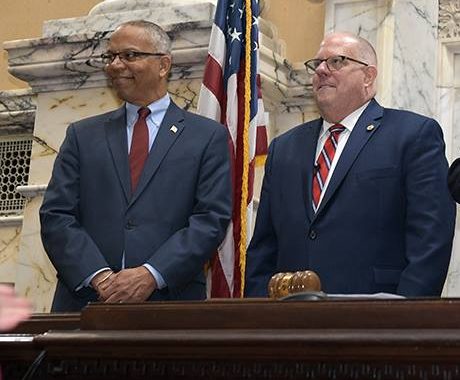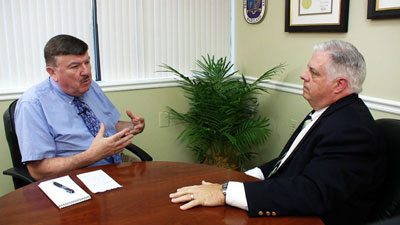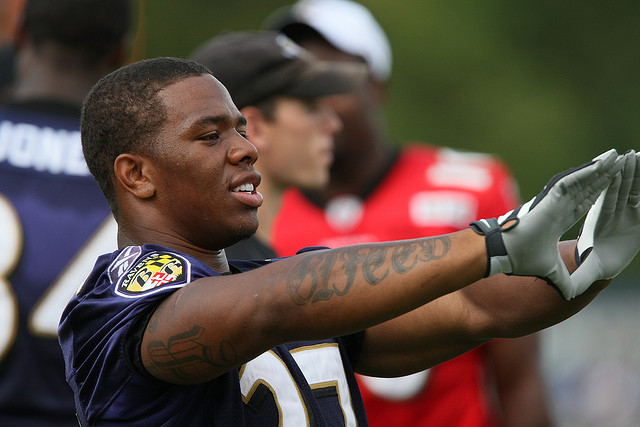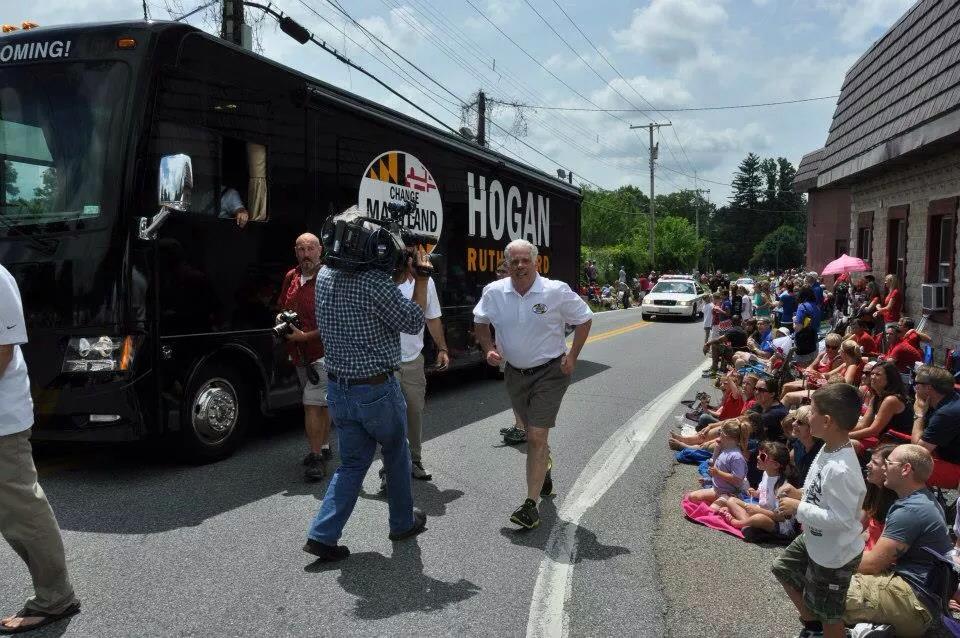This column appears in the February issue of The Business Monthly, serving Howard and Anne Arundel counties.
You probably don’t give much thought to Maryland’s lieutenant governor. That’s OK. The legislators didn’t give it an awful lot of thought when they put the office back into the state constitution 51 years ago.
Maryland had gotten along without an LG for over a hundred years after legislators got angry with a lieutenant governor right after the Civil War.
They decided they needed one after Gov. Spiro Agnew became Richard Nixon’s vice president in 1969. The General Assembly had to choose a new governor. Lo and behold, the delegates and senators voted to make Speaker of the House Marvin Mandel the chief executive. The following year, the post of lieutenant governor went back in the constitution after voters approved it.
That wound up being a good thing when Gov. Marvin Mandel went to prison on federal corruption charges, and Lt. Gov. Blair Lee III filled in as acting governor.
Little to do
Other than waiting for a governor to be dead, disabled or otherwise detained, the constitution doesn’t give the LG anything to do. Says the constitution: “There shall be a Lieutenant Governor, who shall have only the duties delegated to him by the Governor.”
In some states, the lieutenant governor serves as president of the state Senate or is given other duties, such as commissioner of culture, recreation and tourism in Louisiana.
Mandel gave Blair Lee III, a former state senator, a lot to do.
There was a problem when they set up the office that became apparent in 1979 and has never been fixed. When candidates for governor file to run for the job, they have to file with a candidate for lieutenant governor too. Then they run together as a ticket. In other states, like Virginia, the LG candidates run separately and these states can have governors and their lieutenants from different parties.
When you have a lot of candidates for an open seat as governor, as we have this year, there tends to be a real problem with this filing deadline, which comes up Feb. 22. There are 10 declared Democratic candidates and there is no clear frontrunner with a lock on the race, though Comptroller Peter Franchot might argue with that based on some polling.
Even Franchot, who got 1.6 million votes in 2018 – more than any statewide candidate ever has — had the same problem that confronted Harry Hughes in 1978. Lt. Gov. Blair Lee was considered the Democratic front runner for governor and his safe pick for LG was Senate President Steny Hoyer. Hughes, a former senator and transportation secretary, was a mild-mannered dark horse or as one senator put it, “a lost ball in high grass.”
Taking a chance
Getting someone to run with you on a ticket is very hard if they’re not sure you can win. Harry Hughes wound up picking a first-term Prince George’s County Council member named Sam Bogley, not knowing that he and Bogley disagreed on a lot of issues, particularly abortion, on which Bogley was strongly pro-life.
Hughes wound up getting a front-page endorsement from the Sun, which had a lot more influence back then. Hughes won the Democratic primary and served two-terms as governor. He never gave Bogley a thing to do, and ditched him in his second term for Joe Curran, a friend and senator who went on to be a four-term attorney general and father-in-law of Gov. Martin O’Malley. Curran’s daughter Katie Curran O’Malley, a former district court judge, is running for AG herself this year.
Blair Lee became the first of a string of four Democratic lieutenant governors who tried but could not get themselves elected to the top job.
The 2014 election was a bit unusual in that the two party nominees for lieutenant governor were both qualified to be governor themselves. Democrat Lt. Gov. Anthony Brown got two-term Howard County Executive Ken Ulman to abandon his own campaign for governor. Ulman had served as Gov. Parris Glendening’s staff for the Board of Public Works, a position that provides broad knowledge of state government workings. Republican Larry Hogan got Boyd Rutherford to run with him. Rutherford had been state secretary of General Services under Gov. Bob Ehrlich and a subcabinet secretary under President Bush, giving him wide experience in government.
Mostly lack of experience
But who did Peter Franchot wind up getting, after promising to pick a Black woman for his ticket? He chose a first-term Prince George’s County Council member named Monique Anderson-Walker. Not only does she have no state government experience – besides being married to Del. Jay Walker – the couple also had some tax problems which surfaced the same day Franchot named her.
On Thursday, Tom Perez, a former U.S. and Maryland labor secretary, named Shannon Sneed, who served one term on the Baltimore City Council, as his LG.
What about other Dems running for governor? Former Prince George’s County Executive Rushern Baker was able to get Nancy Navarro, the first Latina to serve on the Montgomery County Council and a member of the elected school board before that. Wes Moore, a well-known author and Army veteran, was able to get Aruna Miller, a former delegate and congressional candidate, to run with him.
Lesser known candidates for governor had to settle for LG picks even less known than themselves. John King Jr., President Obama’s education secretary, is running with Michelle Siri, executive director of the Women’s Law Center of Maryland (not the I-phone helper). Ashwani K. Jain, a former Obama administration official you’ve never heard of, is running with LaTrece Hawkins Lytes, community activist with no government experience.
You get the picture. It happened in 2018 too. The Democratic nominee for governor, Ben Jealous, the former head of the NAACP who had never run for elected office, chose Susan Turnbull, a former chair of the Maryland Democratic Party, who also had never held elected office. They got creamed by Hogan and Rutherford, who has been a steady right hand for Hogan, filling in on a lot of important matters.
The solution is pretty obvious. Allow the candidates for governor to choose their lieutenant governors after they win their party primaries in June. This would allow the party nominees to pick someone who might have a better chance of helping them win and governing the state. That’s what a constitutional amendment that passed the House of Delegates in 2019 would have done. It died in a Senate committee without even a hearing.
This year, for the 12th election in a row, we’re stuck with whoever the candidates can get to run with them, not knowing even if they can win the nomination, no less the general election. It’s a flawed system that should have been fixed decades ago.







Recent Comments